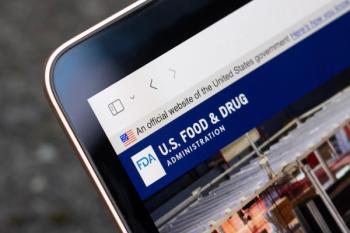
AAM White Paper Offers Causes and Solutions to the US Generic Drug Shortage
A white paper crafted by the Association for Accessible Medicines (AAM) outlined that main causes of generic drug shortages and recommended several actions for stakeholders to remedy current shortages and prevent future ones.
The Association for Accessible Medicines (AAM) published a
Generic medicines are the “backbone of the US prescription drug market”, according to AAM, and make up more than 90% of all small molecule prescriptions. The availability of generics has been very stable, even during the COVID-19 pandemic. However, shortages seem to be on the right, affecting roughly 3% of brand-only markets and 4% to 6% of generic/brand and generic-only markets.
The authors stressed the importance of distinguishing drug shortages from drugs that are out-of-stock, saying that while shortages occur when, “when the demand or projected demand for the drug within the United States exceeds the supply of the drug,” out-of-stock refers to a drug outage. Although the end result is the same, out-of-stock cases have different causes and solutions from formal shortages.
“These distinctions are critical. When formulating solutions, they must be tailored to true drug shortages, although policymakers should also consider the causes and impacts of practices that result in drugs being out of stock,” the authors noted.
As of June 6, 2023, there were 138 products listed on the FDA drug shortage list, of which all but 40 were on the American Society for Health Systems Pharmacists’ (ASHP) drug shortage list. Additionally, the ASHP list included 141 other products that are not considered to be in shortage by the FDA.
The risk of drug shortages is increasing as the long-term sustainability of generic manufacturing faces challenges, including low return on investment because of lowered prices, drug purchasers becoming more concentrated, new generics facing slow adoption, less registered manufacturing sites, and cancelled generic launches because of limited commercial opportunities.
The 3 main factors that lead to drug shortages are market and pricing factors that undermine the sustainability of low-cost generic manufacturing, government policies that compound challenging market dynamics, and regulatory and manufacturing challenges.
The authors broke down each of these factors and their respective causes, including:
- High generic price deflation
- Supply chain purchasing power
- Increasing input costs
- Slower adoption of newer generics and biosimilars
- Seasonal/cyclical prediction models
- Medicaid generic drug penalty
- Government payment policies
- State regulatory burdens
- Inspections and warning letters
- Insufficient supply of available raw materials and components
- Ability to obtain the Drug Enforcement Administration (DEA) quota for active pharmaceutical ingredients (API)
- Challenges associated with the manufacturing and release of products
- Natural disasters
- Drug Supply Chain Security Act
Price deflation caused by unchecked consolidation among generic drug-buying organization, making it difficult for companies to justify the manufacturing of generic products. In fact, 3 hospital/clinic group purchasing organizations control about 90% of all generic medicine purchasing for hospitals and clinics.
“Fewer buyers means fewer markets for the more than 200 generic drug manufacturers in the U.S., and can result in unsustainably low prices with as many as a dozen manufacturers making any given product,” the authors explained.
The business model for many generic companies is to strive to offer a wide range of medicines, including those that are not directly generating positive financial returns. However, newer generics and biosimilars have experienced
Federal government policies, such as Medicaid price inflation penalties for generics and Medicare reimbursement policies, can take some power away from generics manufacturers. Price penalties result in millions of dollars in rebate penalties on generics that have not had inflation-induced price increases and Medicare reimbursements often reward providers for prescribing higher-cost products over generics and biosimilars.
Some of the challenges associated with manufacturing and product launches included limited number of qualified production lines and facilities, increased costs of API and raw materials, and complexity of manufacturing processes.
The authors suggested several solutions to ensuring a sustainable generic drug market, including:
- Speed new generics to market through legislation that enables generic manufacturers to receive key quantitative and qualitative formulation information from the FDA
- Ensure that Medicare drug plans cover and encourage the use of new generics and biosimilars
- Amend the 340B program to exempt low-cost generics or adjust the ceiling price required of generics.
- And more.
AAM also suggested solutions that could increase reserves of critical medicines, improve generic manufacturing capacity, and reduce regulatory and manufacturing challenges. The solutions addressed issues regarding government programs (Strategic National Stockpile program, shelf-life extension programs, FDA transparency on application and inspection statuses), incentives for generic drugs (federal grants, hospital purchasing incentives), and improvements for federal agency efficiency (FDA Essential Medicines List, expansion of powers for FDA Drug Shortage Staff, expedited resolution pathway for drugs in shortage.
“At the core, shortages reflect challenges to the long-term sustainability of generic medicines. While each drug shortage is unique, most stem from the increasing fragility of the generic drug market,” wrote the authors.
Newsletter
Stay ahead of policy, cost, and value—subscribe to AJMC for expert insights at the intersection of clinical care and health economics.








































